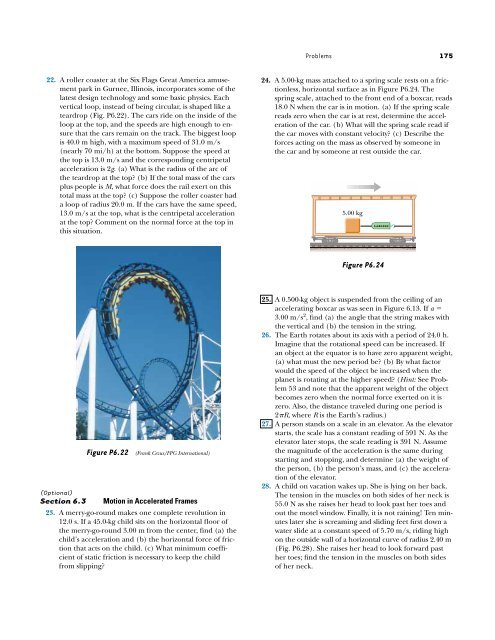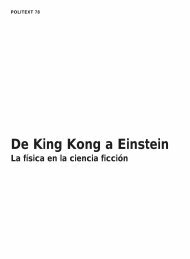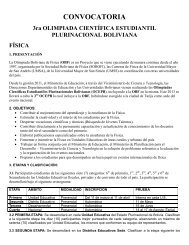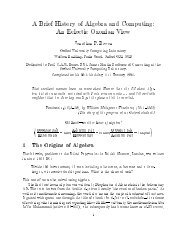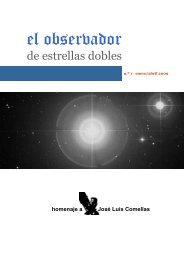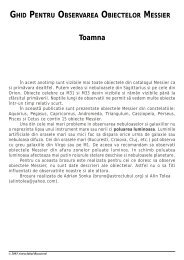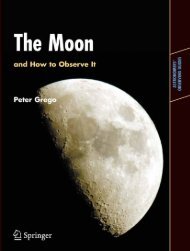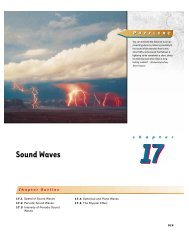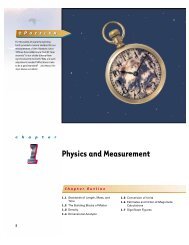Circular Motion and Other Applications of Newton's Laws
Circular Motion and Other Applications of Newton's Laws
Circular Motion and Other Applications of Newton's Laws
You also want an ePaper? Increase the reach of your titles
YUMPU automatically turns print PDFs into web optimized ePapers that Google loves.
22. A roller coaster at the Six Flags Great America amusement<br />
park in Gurnee, Illinois, incorporates some <strong>of</strong> the<br />
latest design technology <strong>and</strong> some basic physics. Each<br />
vertical loop, instead <strong>of</strong> being circular, is shaped like a<br />
teardrop (Fig. P6.22). The cars ride on the inside <strong>of</strong> the<br />
loop at the top, <strong>and</strong> the speeds are high enough to ensure<br />
that the cars remain on the track. The biggest loop<br />
is 40.0 m high, with a maximum speed <strong>of</strong> 31.0 m/s<br />
(nearly 70 mi/h) at the bottom. Suppose the speed at<br />
the top is 13.0 m/s <strong>and</strong> the corresponding centripetal<br />
acceleration is 2g. (a) What is the radius <strong>of</strong> the arc <strong>of</strong><br />
the teardrop at the top? (b) If the total mass <strong>of</strong> the cars<br />
plus people is M, what force does the rail exert on this<br />
total mass at the top? (c) Suppose the roller coaster had<br />
a loop <strong>of</strong> radius 20.0 m. If the cars have the same speed,<br />
13.0 m/s at the top, what is the centripetal acceleration<br />
at the top? Comment on the normal force at the top in<br />
this situation.<br />
Figure P6.22 (Frank Cezus/FPG International)<br />
(Optional)<br />
Section 6.3 <strong>Motion</strong> in Accelerated Frames<br />
23. A merry-go-round makes one complete revolution in<br />
12.0 s. If a 45.0-kg child sits on the horizontal floor <strong>of</strong><br />
the merry-go-round 3.00 m from the center, find (a) the<br />
child’s acceleration <strong>and</strong> (b) the horizontal force <strong>of</strong> friction<br />
that acts on the child. (c) What minimum coefficient<br />
<strong>of</strong> static friction is necessary to keep the child<br />
from slipping?<br />
Problems 175<br />
24. A 5.00-kg mass attached to a spring scale rests on a frictionless,<br />
horizontal surface as in Figure P6.24. The<br />
spring scale, attached to the front end <strong>of</strong> a boxcar, reads<br />
18.0 N when the car is in motion. (a) If the spring scale<br />
reads zero when the car is at rest, determine the acceleration<br />
<strong>of</strong> the car. (b) What will the spring scale read if<br />
the car moves with constant velocity? (c) Describe the<br />
forces acting on the mass as observed by someone in<br />
the car <strong>and</strong> by someone at rest outside the car.<br />
5.00 kg<br />
Figure P6.24<br />
25. A 0.500-kg object is suspended from the ceiling <strong>of</strong> an<br />
accelerating boxcar as was seen in Figure 6.13. If a �<br />
3.00 m/s 2 , find (a) the angle that the string makes with<br />
the vertical <strong>and</strong> (b) the tension in the string.<br />
26. The Earth rotates about its axis with a period <strong>of</strong> 24.0 h.<br />
Imagine that the rotational speed can be increased. If<br />
an object at the equator is to have zero apparent weight,<br />
(a) what must the new period be? (b) By what factor<br />
would the speed <strong>of</strong> the object be increased when the<br />
planet is rotating at the higher speed? (Hint: See Problem<br />
53 <strong>and</strong> note that the apparent weight <strong>of</strong> the object<br />
becomes zero when the normal force exerted on it is<br />
zero. Also, the distance traveled during one period is<br />
2�R, where R is the Earth’s radius.)<br />
27. A person st<strong>and</strong>s on a scale in an elevator. As the elevator<br />
starts, the scale has a constant reading <strong>of</strong> 591 N. As the<br />
elevator later stops, the scale reading is 391 N. Assume<br />
the magnitude <strong>of</strong> the acceleration is the same during<br />
starting <strong>and</strong> stopping, <strong>and</strong> determine (a) the weight <strong>of</strong><br />
the person, (b) the person’s mass, <strong>and</strong> (c) the acceleration<br />
<strong>of</strong> the elevator.<br />
28. A child on vacation wakes up. She is lying on her back.<br />
The tension in the muscles on both sides <strong>of</strong> her neck is<br />
55.0 N as she raises her head to look past her toes <strong>and</strong><br />
out the motel window. Finally, it is not raining! Ten minutes<br />
later she is screaming <strong>and</strong> sliding feet first down a<br />
water slide at a constant speed <strong>of</strong> 5.70 m/s, riding high<br />
on the outside wall <strong>of</strong> a horizontal curve <strong>of</strong> radius 2.40 m<br />
(Fig. P6.28). She raises her head to look forward past<br />
her toes; find the tension in the muscles on both sides<br />
<strong>of</strong> her neck.


